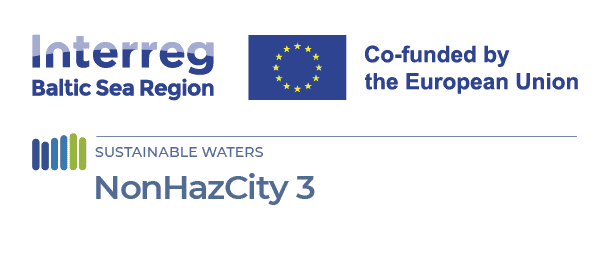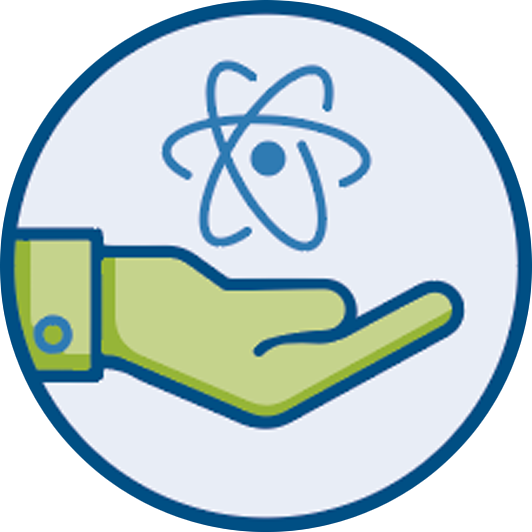
Best Practices of NonHazCity Pilots: Towards Tox-Free, Circular, and Climate-Friendly Buildings in BSR Cities
26 August 2025
The NonHazCity 3 (NHC3) project – “Reducing hazardous substances in construction to safeguard the aquatic environment, protect human health and achieve more sustainable buildings” – has brought forward practical and strategic solutions to reduce harmful chemicals in the built environment. By testing new approaches in different Baltic Sea Region (BSR) cities, the project demonstrates how construction materials and building management can follow a three-pillar approach: tox-free, circular, and climate-friendly.
The pilots, involving municipalities, private homeowners, and construction professionals, assessed and refined tools and solutions designed to reduce emissions of hazardous substances (HS). Their insights provide valuable lessons for building healthier and more sustainable living environments.
Assessing the Solutions: The Four Key Criteria
Each pilot solution was evaluated through a structured assessment, covering technical feasibility, financial viability, social acceptability, and legal feasibility (where relevant). This combined both quantitative evaluation and qualitative reflections by the pilot implementers.
- Technical Feasibility
- Strengths: Tools like the Check(ED) app addressed the lack of direct chemical data by offering pre-defined information on endocrine disrupting chemicals (EDCs) in construction materials. The web browser version was considered more accessible than the mobile version.
- Challenges: Identifying materials in older buildings proved difficult, and the app’s interface was described as unintuitive in places.
- Financial Viability
- Strengths: The app itself was free, lowering financial barriers. Users noted potential long-term financial benefits from creating healthier, more sustainable homes.
- Challenges: While the app suggested safer alternatives, replacing hazardous materials with less toxic options could involve higher upfront costs.
- Social Acceptability
- Strengths: Residents appreciated the tool, using it to learn about potential health risks in their homes. Sharing it with family and friends fostered engagement and discussion on safer housing.
- Challenges: Time and effort required to use the app may reduce widespread adoption.
- Legal Feasibility
- This aspect was not directly assessed for tools like the DIY guide and the Check(ED) app. However, the integration of tox-free and circular practices into national policies remains crucial for long-term impact.
Fact Sheets: Awareness Tools with Room for Growth
The project also developed fact sheets as introductory resources on tox-free, circular, and climate-friendly construction practices.
- Success Factors: Concise overviews and highlights of eco-labels were highly appreciated, especially for understanding certification schemes.
- Challenges: Users often found the fact sheets too general, lacking practical procurement guidance. Many emphasized the need for national adaptation.
- Impact: They effectively raised awareness but had limited direct measurable impact on HS reduction.
- Suggestions for Improvement:
- Develop adaptable, country-specific versions.
- Provide deeper insights into certification schemes.
- Offer web-based, modular, or interactive formats for easier use.
- Combine fact sheets with more detailed guidance for practical implementation.
Key Observations Worth Sharing
- Awareness-raising works: Even lightweight tools like the Check(ED) app and fact sheets can initiate meaningful discussions about hazardous substances in homes.
- Accessibility is essential: Digital tools need to balance detail with user-friendliness, ensuring they remain accessible to residents of different backgrounds.
- Scalability requires support: While tools are transferable across regions, wider adoption depends on user motivation, legal frameworks, and national adaptation.
- Integration strengthens impact: Combining introductory resources with practical, hands-on guidance creates a more complete pathway to tox-free construction.
Moving Forward
The NonHazCity pilots demonstrate that achieving tox-free, circular, and climate-friendly buildings is not only possible but already underway. The project’s tools have shown promise in raising awareness, informing better choices, and fostering dialogue among stakeholders.
Yet, the lessons highlight the need for:
- more user-friendly and adaptable tools,
- integration into national regulations and procurement frameworks, and
- stronger connections between awareness materials and practical implementation guides.
By embracing these practices, cities across the BSR can lead the way in creating healthier living environments, reducing hazardous emissions, and contributing to climate-neutral, circular construction.
Read the full publication NHC3-O2.5-Solutions-evaluation





